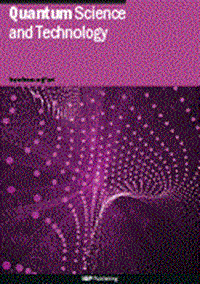A flexible SoC for quantum key distribution post-processing based on RISC-V processor
IF 5
2区 物理与天体物理
Q1 PHYSICS, MULTIDISCIPLINARY
引用次数: 0
Abstract
In the domain of quantum-secure communications, post-processing emerges as a critical mechanism to ensure the security and integrity of the generated keys generated by quantum key distribution (QKD). However, existing post-processing frameworks often lack universality, being highly tailored to single-algorithm implementations and frequently neglecting key aspects such as system scalability and integration. To address these limitations, we present a novel system-on-chip (SoC) architecture for QKD post-processing, built around a co-designed framework featuring a RISC-V soft-core processor. This architecture incorporates core functionalities essential to QKD post-processing, including privacy amplification, information reconciliation, and high-speed communication interfaces. By leveraging the flexibility of the open-source RISC-V instruction set, the system achieves enhanced adaptability and energy efficiency. Additionally, a separated-bus architecture is employed, decoupling data and instruction buses to optimize data transfer efficiency and overall system performance, paving the way for scalable and high-throughput quantum communication systems. The system is deployed on the Xilinx Kintex Ultrascale series development board. At the Bob side, with a frame length of 16 384, the information reconciliation module and the privacy amplification module achieves throughputs of 29.73 Mbps and 131.07 Mbps, respectively.一种基于RISC-V处理器的量子密钥分发后处理灵活SoC
在量子安全通信领域,后处理是保证量子密钥分发(QKD)生成密钥安全性和完整性的关键机制。然而,现有的后处理框架往往缺乏通用性,高度适合于单一算法的实现,并且经常忽略系统可扩展性和集成等关键方面。为了解决这些限制,我们提出了一种用于QKD后处理的新型片上系统(SoC)架构,该架构围绕具有RISC-V软核处理器的协同设计框架构建。该体系结构集成了QKD后处理所必需的核心功能,包括隐私放大、信息协调和高速通信接口。利用开源RISC-V指令集的灵活性,增强了系统的适应性和能效。此外,采用分离总线架构,将数据和指令总线解耦,以优化数据传输效率和整体系统性能,为可扩展和高吞吐量量子通信系统铺平道路。该系统部署在赛灵思Kintex Ultrascale系列开发板上。在Bob端,帧长为16 384,信息调和模块和隐私放大模块的吞吐量分别为29.73 Mbps和131.07 Mbps。
本文章由计算机程序翻译,如有差异,请以英文原文为准。
求助全文
约1分钟内获得全文
求助全文
来源期刊

Quantum Science and Technology
Materials Science-Materials Science (miscellaneous)
CiteScore
11.20
自引率
3.00%
发文量
133
期刊介绍:
Driven by advances in technology and experimental capability, the last decade has seen the emergence of quantum technology: a new praxis for controlling the quantum world. It is now possible to engineer complex, multi-component systems that merge the once distinct fields of quantum optics and condensed matter physics.
Quantum Science and Technology is a new multidisciplinary, electronic-only journal, devoted to publishing research of the highest quality and impact covering theoretical and experimental advances in the fundamental science and application of all quantum-enabled technologies.
 求助内容:
求助内容: 应助结果提醒方式:
应助结果提醒方式:


